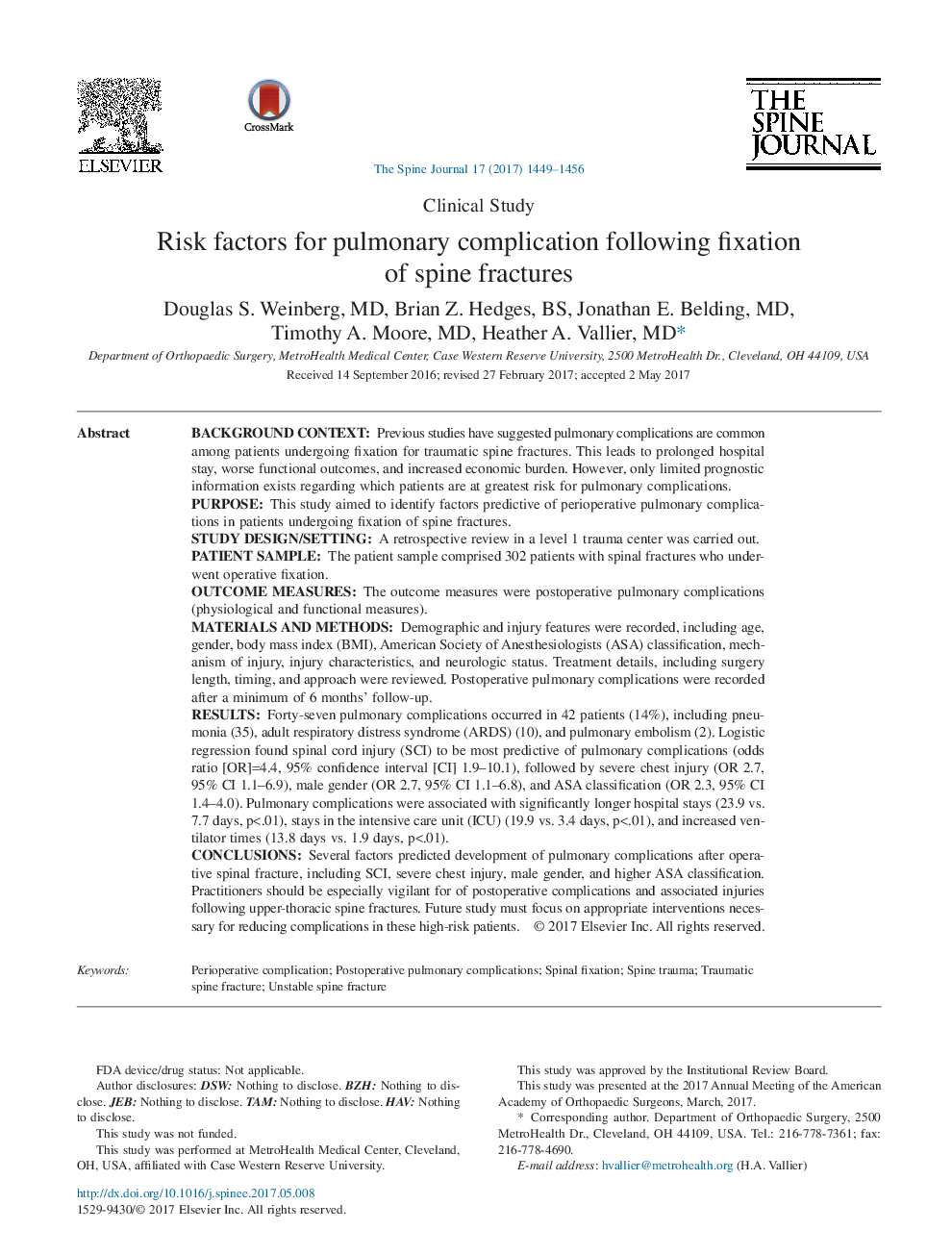| کد مقاله | کد نشریه | سال انتشار | مقاله انگلیسی | نسخه تمام متن |
|---|---|---|---|---|
| 5712706 | 1605066 | 2017 | 8 صفحه PDF | دانلود رایگان |
Background ContextPrevious studies have suggested pulmonary complications are common among patients undergoing fixation for traumatic spine fractures. This leads to prolonged hospital stay, worse functional outcomes, and increased economic burden. However, only limited prognostic information exists regarding which patients are at greatest risk for pulmonary complications.PurposeThis study aimed to identify factors predictive of perioperative pulmonary complications in patients undergoing fixation of spine fractures.Study Design/SettingA retrospective review in a level 1 trauma center was carried out.Patient SampleThe patient sample comprised 302 patients with spinal fractures who underwent operative fixation.Outcome MeasuresThe outcome measures were postoperative pulmonary complications (physiological and functional measures).Materials and MethodsDemographic and injury features were recorded, including age, gender, body mass index (BMI), American Society of Anesthesiologists (ASA) classification, mechanism of injury, injury characteristics, and neurologic status. Treatment details, including surgery length, timing, and approach were reviewed. Postoperative pulmonary complications were recorded after a minimum of 6 months' follow-up.ResultsForty-seven pulmonary complications occurred in 42 patients (14%), including pneumonia (35), adult respiratory distress syndrome (ARDS) (10), and pulmonary embolism (2). Logistic regression found spinal cord injury (SCI) to be most predictive of pulmonary complications (odds ratio [OR]=4.4, 95% confidence interval [CI] 1.9-10.1), followed by severe chest injury (OR 2.7, 95% CI 1.1-6.9), male gender (OR 2.7, 95% CI 1.1-6.8), and ASA classification (OR 2.3, 95% CI 1.4-4.0). Pulmonary complications were associated with significantly longer hospital stays (23.9 vs. 7.7 days, p<.01), stays in the intensive care unit (ICU) (19.9 vs. 3.4 days, p<.01), and increased ventilator times (13.8 days vs. 1.9 days, p<.01).ConclusionsSeveral factors predicted development of pulmonary complications after operative spinal fracture, including SCI, severe chest injury, male gender, and higher ASA classification. Practitioners should be especially vigilant for of postoperative complications and associated injuries following upper-thoracic spine fractures. Future study must focus on appropriate interventions necessary for reducing complications in these high-risk patients.
Journal: The Spine Journal - Volume 17, Issue 10, October 2017, Pages 1449-1456
